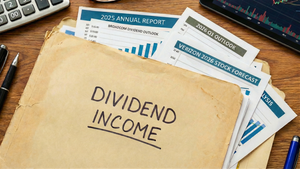The 10 metros building the most single-family homes are all located where home prices have skyrocketed as people move in from other parts of the country
(NASDAQ: RDFN) — Sun Belt metros are leading the way when it comes to building new homes—and they need them, with scores of buyers moving in from other parts of the country, causing inventory to dwindle and prices to surge, according to a new report from Redfin (redfin.com), the technology-powered real estate brokerage.
Austin, TX had 31.1 single-family building permits per 10,000 people in the first quarter, the most per capita of any major U.S. metro. It’s followed by Raleigh, NC (30.7), Jacksonville, FL (29.2), Nashville, TN (26.6) and Charlotte, NC (22.9).
Five other Sun Belt metros round out the top 10: Phoenix (22.7), Houston (22.4), Orlando, FL (20.3), Dallas (18.5) and Las Vegas (17.2).
For multifamily properties, the top 10 list is split between Sun Belt metros and northern metros. Austin leads the pack again, with 26.1 multifamily building permits per 10,000 people in the first quarter, followed by Jacksonville (19.9), Salt Lake City (16.7), Orlando (12.7) and Denver (12.6). Seattle (11.9), San Antonio, TX (11.5), Richmond, VA (11.5), Minneapolis (11.1) and Charlotte (11) round out the top 10.
All in all, 49 of the 53 U.S. metros with more that 1 million residents issued more single-family building permits per capita in the first quarter than they did on average in the 10 years prior to the pandemic (2010-2019). Thirty-eight of them issued more multifamily permits.
Homebuyer demand has started cooling, housing supply is declining at a slower pace than it was at the peak of the pandemic and sales of new homes are down. But the number of homes for sale remains near all-time lows and monthly mortgage payments are near their record high, partly due to mortgage rates that have risen from roughly 3% to over 5% in recent months. Building more homes is one of the best ways to ease the affordability crisis.
“If there had been enough homes at the start of the pandemic, housing costs might not have skyrocketed the way they did over the past two years,” said Redfin Chief Economist Daryl Fairweather. “The government should support homebuilding with things like subsidies and upzoning even as demand pulls back so the housing-supply hole starts to fill in. There still aren’t enough homes to meet the pace of household creation, and we need to be more prepared when demand inevitably picks back up.”
Home prices are skyrocketing in Sun Belt metros
Sun Belt home prices are skyrocketing and affordability is eroding quickly. The 10 metros with the most single-family building permits per capita in the first quarter all saw sale prices shoot up more than the national level of 15.5% year over year in April. Prices in Las Vegas surged 29%, more than anywhere else in the country, while prices in Nashville, Orlando, Raleigh and Phoenix were also among the 10 metros with the fastest-increasing prices (all growing at least 25%).
While more new construction increases the total number of homes on the market, new homes are more expensive. The typical newly built home nationwide sold for $470,000 in the first quarter (up 19.2% year over year), while the typical existing home sold for $403,000 (up 16.7%). Another barrier for homebuyers is competition from investors: Newly built homes made up more than 25% of houses bought by investors in the fourth quarter, up from 3% two years earlier.
Rents are surging in metros building the most multifamily units
The story is similar in the rental market, with outsized price growth in five of the top six metros with the most multifamily building permits per capita. Austin, Jacksonville, Orlando, Denver and Seattle all saw asking rents rise more than the 15% national increase in April, with Austin coming in number one (+46% year over year). Rents have risen a great deal in those places partly because home prices have surged, leading to increased rental demand.
There’s a relative lack of homebuilding in places homebuyers are leaving
On the other end of the spectrum, Hartford, CT has 1.3 single-family building permits per 10,000 people, the fewest of the metros included in this analysis. It’s followed by New York (1.9), Buffalo, NY (2.1), Chicago (2.3) and San Francisco (2.3). Next come Los Angeles (2.6), Boston (2.6), Providence, RI (2.7), San Jose, CA (2.9), Milwaukee (2.9) and Detroit (2.9).
California has a lack of vacant land and less space zoned for housing development. Another reason for the relative lack of building permits in those areas is the outflow of homebuyers. New York, Chicago, San Francisco, Los Angeles, Boston, San Jose and Detroit are all among the top 20 metros homebuyers are leaving. Home-price growth is slower than the national median in nine of those 10 metros (San Jose is the exception).
Signs point to a nationwide increase in homebuilding
The pandemic-driven homebuying boom intensified an existing housing shortage, drove up home and rental prices and brought the need for newly constructed homes sharply into focus.
“We built fewer homes in the 2010s than we have since the 1960s, which is one of the fundamental problems with today’s housing market—especially with millennials, the biggest generation, now in their prime homebuying years,” Fairweather said. “Builders were hit hard by the housing crash—and home construction didn’t fully recover because of a combination of rising material and labor costs and restrictive zoning. Since the start of the pandemic, builders have run into additional problems, with a shortage of materials and skyrocketing lumber costs. As a result, the U.S. is roughly 4 million houses short of meeting homebuyer and renter demand.”
There are promising signs that homebuilders are making progress adding new supply. U.S. building permits were up 3.1% year over year in April after plummeting in mid-2020 at the onset of the pandemic. More than 1.7 million homes—including both single-family and multifamily properties—were under construction in March, the highest level since 2006.
Builder sentiment fell to a two-year low in May. Still, the outlook for building new homes is better than it was a year ago. If mortgage rates continue to plateau, builders may feel more confident in the outlook for demand.
To view the full report, including a metro-level table and methodology, please visit: https://www.redfin.com/news/metros-building-new-construction-Q1-2022/
About Redfin
Redfin (www.redfin.com) is a technology-powered real estate company. We help people find a place to live with brokerage, instant home-buying (iBuying), rentals, lending, title insurance, and renovations services. We sell homes for more money and charge half the fee. We also run the country's #1 real-estate brokerage site. Our home-buying customers see homes first with on-demand tours, and our lending and title services help them close quickly. Customers selling a home can take an instant cash offer from Redfin or have our renovations crew fix up their home to sell for top dollar. Our rentals business empowers millions nationwide to find apartments and houses for rent. Since launching in 2006, we've saved customers more than $1 billion in commissions. We serve more than 100 markets across the U.S. and Canada and employ over 6,000 people.
For more information or to contact a local Redfin real estate agent, visit www.redfin.com. To learn about housing market trends and download data, visit the Redfin Data Center. To be added to Redfin's press release distribution list, email press@redfin.com. To view Redfin's press center, click here.
View source version on businesswire.com: https://www.businesswire.com/news/home/20220527005063/en/
Contacts
Redfin Journalist Services:
Isabelle Novak, (414) 861-5861
press@redfin.com





